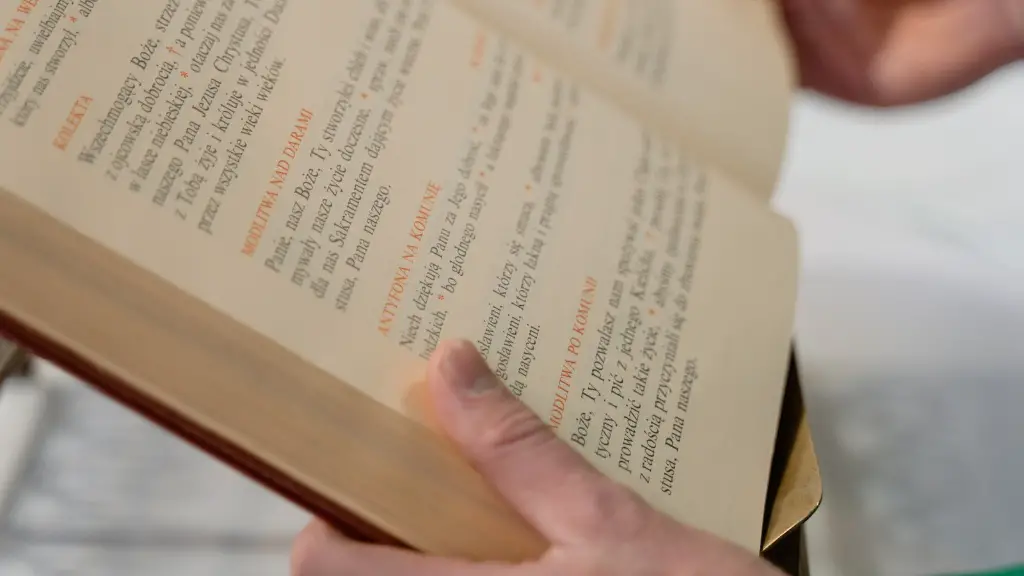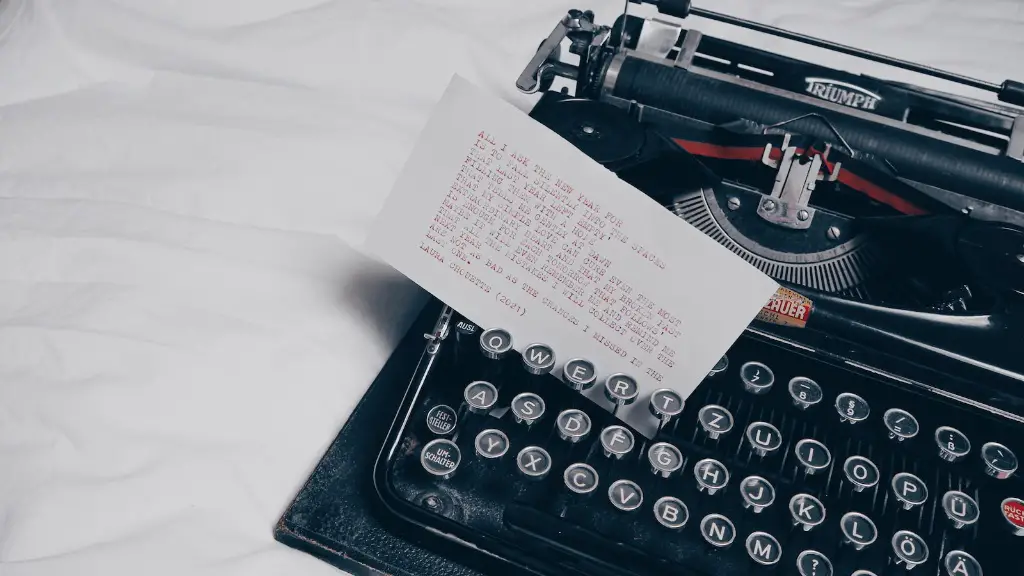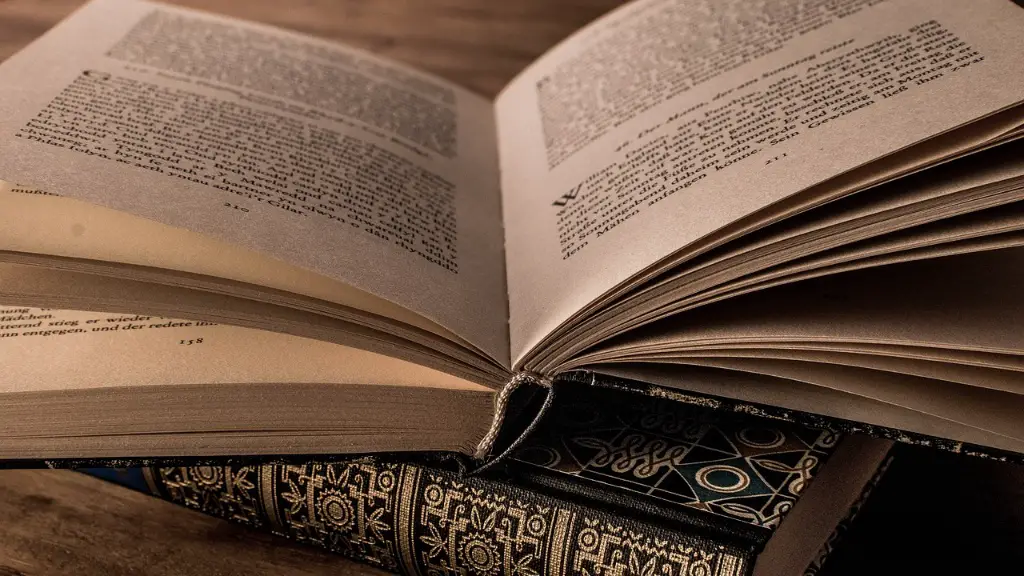William Butler Yeats is one of the most celebrated and influential Irish poets of the 20th century. He is remembered for his mesmerizing lyrical style, his vivid imagery and the tangible expression of his Irish identity in his works. Yeats’s deep connection with Ireland and his sense of Irishness were a crucial part of his creative process. It is clear that his Irish identity profoundly shaped his poetry, and affected his choice of subjects, themes and techniques.
Yeats was born in Dublin in 1865 to Irish parents. From a young age, he was filled with a deep love and admiration for his homeland and its heritage, particularly its literary and mythological history. He was drawn to Irish folklore and the mysticism of Irish spirituality. As his career progressed, he began to incorporate these influences into his works.
Throughout his poetry, Yeats often addressed the turbulent history of Ireland and its struggle for self-determination. His works were a vehicle for his patriotic sentiments, and spoke to the Irish people’s collective experience of displacement, oppression, and bloodshed. In poems such as ‘Easter 1916’ and ‘September 1913’, he used his poetry to capture the emotions of a nation living through challenges and pain.
Yeats also made reference to themes of spiritualism and mysticism. These deep, esoteric concepts were adopted from traditional Celtic mythology and folklore, which spoke to ideals of a mystical, magical world and the spirituality of nature. Yeats’s words evoke the mysticism of the Emerald Isle, such as in the poem ‘The Lake Isle of Innisfree’. These poetic works give readers a glimpse into the timeless beauty of the Irish landscape.
Yeats experimented with a range of techniques throughout his writing. He often used symbolism to represent the complex dynamics of Irish identity and politics. He also employed traditional forms of Irish poetry such as the caoin, and incorporated Gaelic phrasing into some of his work. His use of imagery also draws upon Irish themes and subjects, such as in the poem ‘The Wild Swans at Coole’.
Yeats’s connection with Ireland was so strong that even when he left for London, his poetry still retained the distinctly Irish flavour of his birthplace. His poetry allowed him to explore and express his Irish identity and to connect with a wider audience. He used his art to explore the past, present and future of his country, and his words have left a lasting legacy on the Irish literary landscape.
The Significance of Irish Mysticism
Yeats’s interest in Irish mysticism had a great influence on his work. He looked to the mythology of ancient Celtic legends, particularly those of the Tuatha De Danaan, and was fascinated by such mysterious characters as the Faery Queen, the Salmon of Wisdom and the Cauldron of Inspiration. His works were often infused with this spirituality, for example in poems such as ‘The Stolen Child’ and ‘The Wanderings of Oisin’.
Yeats was also influenced by such Celtic ritual practices as ritual singing, the casting of an ancient Ogham alphabet and the study of shapeless things of the soul. He incorporated many of these elements into his work and had a great interest in the concept of the imaginary, supernatural realm known as the Otherworld. He often referred to the ‘faeries’ and ‘sidhe’, creatures of the Otherworld, and his poetry reflects his search for harmony with the natural and spiritual realms.
The symbolic and mystical imagery of his poetry enables readers to experience the Irish spirit and connection to the land and its myths and legends. Yeats’s strong elemental connections to his native soil framed his work, and his bold voice continues to resonate with a modern generation of Irish poets.
The Symbolism of Irish Folklore
Yeats was deeply influenced by Irish folk stories and superstitions and incorporated them into his works. He used a sense of mystery, supernatural forces or enchanted beings to represent the intangible aspects of the human experience. He often aimed to capture the lost tales of a bygone Irish past through symbols of the love and loyalty of a traditional people.
In the poem ‘The Host of the Air’, Yeats uses the imagery of a host of faeries or mystical creatures to represent the power of love and loyalty, while ‘The Second Coming’ describes a solitary gyre as a figure of transformation and hope. Such symbolism reflects the power of Irish folklore and the enduring legacy of these tales on Yeats’s work.
Yeats looked to the mythological world of ancient Ireland in order to create a unique style of poetry that was deeply rooted in the Irish cultural identity. His works were part of a wider effort to revive the lost myths and stories of his homeland, and to give the Irish people a collective heritage to look back on with pride. His vibrant style also reveals his commitment to evoke emotion in his readers and his skillful use of symbols and metaphors to depict the Irish experience.
Yeats and The Irish Revival
Yeats’s works played an important role in the Irish Literary Revival, a movement that sought to bring Irish literature to the wider world. Alongside fellow poets such as Lady Gregory and John Millington Synge, Yeats sought to bring Irish culture to the fore through such works as ‘A Vision’ and ‘The Shadowy Waters’. These works inspired the work of many other Irish writers, who went on to draw influence from his writings.
Yeats also used his platform to call attention to the political situation in Ireland and to raise awareness of the Irish struggle for freedom. He actively desired to see an independent Ireland, writing poems such as ‘Easter 1916’ and ‘September 1913’ in order to critique the social and political situation. His words were often interpreted as voicing his support for the Easter Rising, which sought to overthrow British rule.
Yeats’s work was thus deeply connected with the struggles and aspirations of the Irish people. This is evidenced in his writing, which often expresses patriotism and pride in the Irish spirit and its people. His poetry was an expression of his commitment to Irish nationalism and provided an opportunity for readers to explore their own Irish identity.
The Impact of Yeats’s Poetry
Yeats’s poetry has had a profound and lasting impact on the Irish literary tradition. His work stands out for its lyricism, imagery and symbolism, which have inspired countless generations of writers. His words evoke the spirit of a nation and speak to the collective experiences and emotions of the Irish people.
Yeats’s poetry reflects his personal connection to Ireland and his profound sense of Irishness. His works were shaped by his country’s tumultuous past and spoke to the feelings of longing and belonging that he felt. His visions of Ireland are magical and mystical, providing readers with a unique insight into the spirit and soul of the Emerald Isle. His legacy continues to influence writers today and his words remain an enduring reminder of the power of love and loyalty.
Symbolic Representations of Irish Heritage
Yeats’s works were often filled with symbols that represent important aspects of Irish heritage. In many cases, he drew directly from aspects of Irish culture, such as the ancient tales of the Celts, for source material. In other works, he used more abstract figures such as mythological creatures and natural motifs to convey ideas and emotions.
Many of these symbols were drawn from traditional Irish sources. Yeats used these as signifiers of his desire to explore and express the unique nature of his beloved homeland. He often turned to the romanticism of his past in order to evoke nostalgia and patriotism among his readers. His works were also attempts to educate and engage audiences with the rich culture and heritage of Ireland.
Yeats’s careful use of symbolism reveals a deep understanding of the complexities and nuances of Irish life. His works successfully capture the spirit, emotion and struggles of his homeland and enabled him to connect with a wider audience. He was able to evoke strong feelings of national identity and pride in his readers, which will continue to resonate for generations to come.
The Appeal of Yeats’s Verses
Yeats’s works contain a timeless appeal for readers. His lyrical verses are filled with evocative language and imagery, which speaks to the reader’s emotions on a deeper level. He used a range of poetic devices to portray the mysteries of Irish life and its cultural identity.
Yeats’s vivid depiction of Ireland and its people give an insight into the shared experience of pain and love, as well as hope and resilience. His words are a testament to the power of poetry to move and inspire readers. His legacy demonstrates the influence of one man’s creative voice and his desire to connect with his inner Irishness.
William Butler Yeats will be remembered for many years to come as a great Irish poet whose works forever changed the Irish literary landscape. His daring style and captivating expressions of feeling have provided readers with a glimpse into the beauty and complexities of the Irish spirit. His poetry is a reminder of the pride, courage and resilience of a nation that has faced much adversity over the years and emerged with a deep, collective sense of identity and loyalty.





